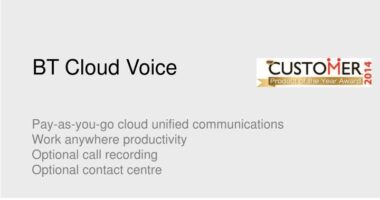The way we work, live our lives, and have pleasure are all being disrupted by technological advancements? Technology has the potential to improve many aspects of corporate operations, including worker productivity, the rate of product creation and manufacturing, the quality of decisions made by workers, and the level of service provided to customers. However, the process of successfully reaping these benefits from the use of new technology is not always an easy one. When new technology first comes out, it often causes problems for society before it starts to help people.
Although the concepts that have been presented in this article may have universal relevance, their primary intention is to relate to the inclusion of modern information and communications technologies into business procedures. Computers and the hardware that connects to them, as well as the data transfer that occurs across local area networks, are all components of information technology. Any activity involving speech or video is considered to be part of communications. This includes the phone system and any other equipment that goes with it, as well as the communication channels that help build wide-area networks.
The Impact of Technology on Business Procedures

Every single activity that takes place within a company is a component of some sort of process. Sometimes the processes can be plainly described and the paths they take can be readily observed, such as the path a purchase order takes. There are other times when the procedure isn’t clear, but it’s still in place, even if it’s just by default.
Businesses often use newly developed technology in order to

Increase the rate at which established procedures are carried out.
Increase the potential of the processes that are already in place.
Make adjustments to the procedures.
As a result of modifying the processes, the new technology will frequently make it possible to do business in novel ways that were not feasible in the past.
When they are initially introduced, new technologies will cause disruption in ways that go beyond merely accelerating already existing processes. This is a consequence of being required to alter habits of conduct and/or relationships with several other people. Productivity often takes an initial hit whenever there is disturbance, and this continues until the newly implemented procedures become as natural as the previous ones. At this point, the goal of getting a higher level of production than before the new technology was put in place has hopefully been met, and it is hoped that this goal has been met.
As a result, the following is an example of a frequent cycle that happens as a result of the introduction of new technologies:

The following are the most obvious reasons why new technology should be introduced:
minimize the disturbance; reduce the amount of time needed to do more and boost your productivity; obtain the greatest possible increase in production.
It is helpful to have an understanding of the following in order to accomplish these goals:
the context within which the processes are carried out; in other words, who will be influenced by changes in the particular processes that are affected by the possibility for technological democratization. There are many distinct types of individuals who will respond to new technology in very diverse ways. Both the day-to-day operations of a business and the development of new technologies are inextricably linked to one another and cannot be separated. Both of these things take place inside a context that both they and the things they impact may be a part of.
The social interactions that exist within an organization, as well as those that may exist with other businesses with which you do business.
Mechanisms of political authority and control inside an organization. How people evaluate their own capabilities and how they see themselves. Technology may serve to further democratic ideals. When it comes to “levels” of management and employees, technology has the potential to be a great equalizer if it is utilized to develop and disseminate information that is helpful to the mission and goals of the organization. The word “disseminate” is especially important in this case because “front-line” workers will be able to improve the number and quality of decisions they make without having to involve higher levels of management. This will happen if access to the information is decentralized and it is easy to share the information.
Different Categories of Individuals with Regards to Technology

If you want to bring new technology into your organization, you might find it helpful to know about the following four types of people:
Early adopters and innovators will conduct their own research on emerging technologies. They will occasionally be useful in presenting new technology to the firm that it would not have been aware of otherwise if it had not been for the company. They will occasionally be a “thorn” in the side of the firm when it comes to pushing for new technology that they believe would be valuable (or just “neat” to have) but does not match the company’s strategy or aims. These individuals will welcome new technologies when others present them to them, and they will frequently be the first ones to fully absorb and make use of the new technology. Furthermore, they may be able to assist others in fully using new technologies. Enthusiasts will joyfully adopt new technological advancements. They won’t actively look for it, but when they do find it, they’ll be eager to incorporate it into their workflows wherever it makes sense to do so. Because of how open-minded they are, it is likely that they will quickly learn how to make use of the new technology, and they may also be helpful to others while they go through the process of learning themselves.

New technology will be accepted by those who accept it because it is necessary. They will not actively look for it. In point of fact, they will frequently engage in avoidance behavior against it in the beginning until they are compelled to embrace it. As soon as it becomes clear to them that the new technology is here to stay, they will gladly learn how to make use of it or, at the very least, how to coexist with it.
Negative thinkers will almost always argue against the introduction of new technology and will frequently do it in a highly noisy manner. They frequently complain about any changes that are made, and if they don’t have to, they won’t ever change; alternatively, they resign before being forced to alter “the way that they do things.”
The relationship between productivity and time will be expressed in a manner that is unique to each of these categories of people. Think about how each member of your own organization fits into one of these four categories, and write down your observations. Consider how this will influence your ability to get the full rewards that you have so carefully targeted. Consider how this will influence your capacity to find further advantages once the technologies have been adopted. If you are aware of the distinctions, you will be better equipped to handle any challenges that arise during and after the implementation process.


